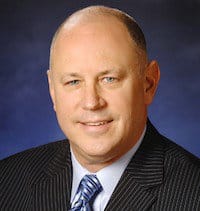
Proposals for changes in equity market structure advanced this year by exchange operators IntercontinentalExchange and Bats Global Markets have been driven largely by increasingly vocal criticism by market participants over a lack of transparency and rising execution costs.
“What we’re going to see over the course of the next year is the industry and the regulators responding to the frustration of the industry,” said Adam Sussman, head of market structure and liquidity partnerships at Liquidnet. “We’ve seen enough of the dirty laundry of the industry to understand that change is needed. You can see this playing out in a couple of major trends.”
One of these trends is a flurry of exchange proposals, starting with the so-called grand bargain proposed by ICE, owner of the New York Stock Exchange. “We saw this with the grand bargain from NYSE trying to say, ‘How do we help solve this problem of 40 different dark pools?’ I think they understand that we’re on the same page, that it’s a give and take.”
ICE has proposed adoption of a trade-at rule that would require brokers to interact with the National Best Bid or Offer (NBBO) on lit markets before executing on dark trading centers, thereby providing an incentive for market-makers and investors to advertise their trading interest by entering displayed orders.

Jeff Sprecher, Intercontinental Exchange
ICE is also proposing elimination of maker-taker pricing, which has become the accepted form of pricing used by exchanges. With myriad different make-take and take-make pricing models in existence today, ICE believes the potential conflicts and complexity that ensue from the maker-taker models outweigh any perceived benefits.
During the company’s most recent earnings call, ICE chairman and CEO Jeff Sprecher said, “Companies decide to go public and raise capital based on the confidence they have that their stock will be accurately dealt with and treated in the market. And so we’re making, I think, real strides in shaping the conversation around how this market should evolve in the United States.”
The ‘grand bargain’ nomenclature refers to the willingness by ICE to drop maker-taker pricing in exchange for a trade-at rule.
“If you want to try to solve the inherent problem of 40 dark pools that don’t add any price or size discovery, you’re going to have to give something back to the industry in exchange,” said Sussman. “NYSE has said, ‘If the industry and the broker dealer community agree to trade-at, we’ll lower the cap on access fees down from 30 mils to 5 mils, and along with that we’ll do away with maker-taker.’”
He added, “When you talk to the buy side, their biggest concern is conflicts of interest in the routing process. By doing away with maker-taker and payment for order flow, it resolves a lot of those conflicts of interests.”
Within a week of ICE’s proposal, Bats came out with its own, which includes implementing tiered market access fees, depending upon an individual security’s average daily volume, beginning at $0.0005 per share (five cents per 100 shares) for the most liquid U.S. securities, and requiring that market centers with less than 1% market share no longer be protected under the trade-through provision of Reg NMS.
“Bats is saying, ‘If the real problem here is access fees and the fact that the majority of broker dealers don’t want to pay them, why don’t we just reduce those, and forget about trade-at. Shouldn’t that clean up these problems in and of itself?’” Sussman said.
Featured image via Dollar Photo Club





